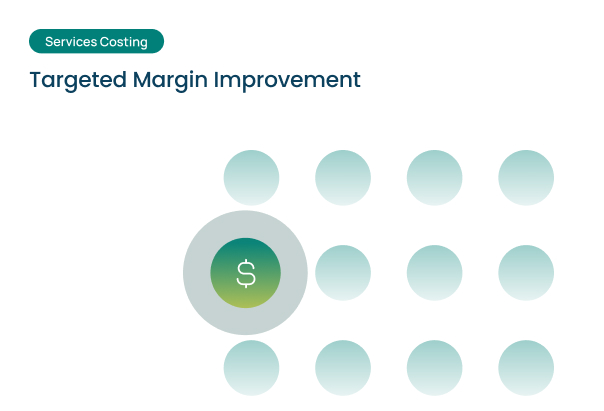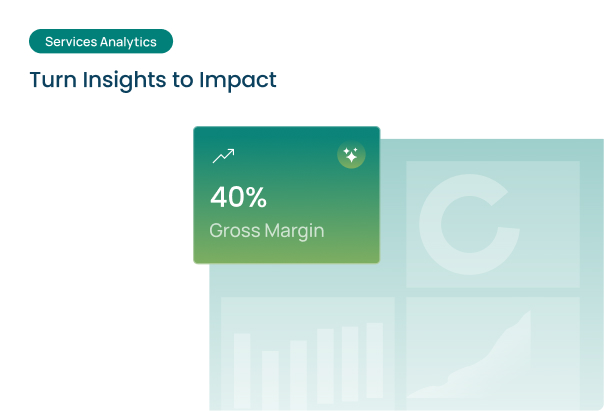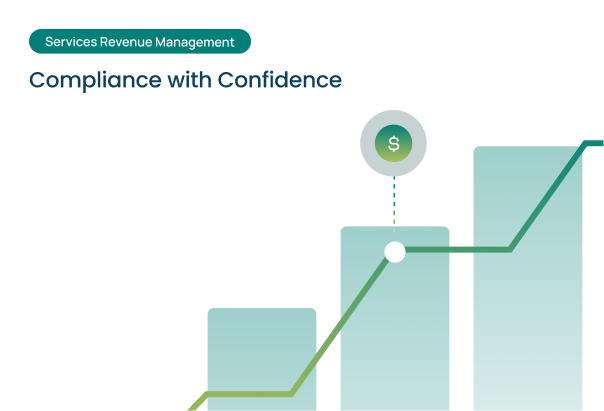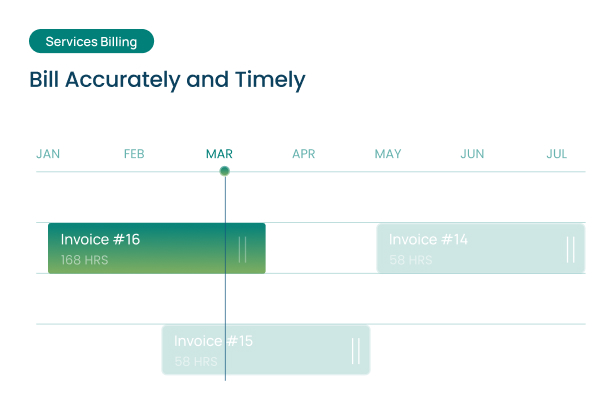



Founders of service-based companies frequently overlook evaluating their business’s worth until contemplating an investment or devising an exit strategy. Their perception of the company’s value is often vague and abstract, and they have unrealistic and inflated valuation expectations. Determining the true value was one of the most daunting tasks we undertook during my tenure as a founder and CFO of a service company.
There are several factors that influence the final valuation, such as company’s current revenue, growth potential, margin forecast, customer base type, competitive advantages from intellectual property and reusable assets, technology trends, the industry’s economic conditions and market volatility, employee capabilities and qualifications, and most importantly, brand value and market reputation.
A higher valuation not only translates to a more substantial payout in the event of an IPO or acquisition, but also opens doors to more favorable terms when raising capital or attracting strategic partners. It helps the business command greater respect and credibility within the industry, potentially opening up new opportunities for growth and expansion.
The valuation of a service company can be calculated using multiple different approaches. It is ideal to apply more than one method to ensure you arrive at an accurate valuation.
Let’s explore various valuation approaches suitable for services firms.
The earnings multiples approach bases a company’s valuation on its ability to generate future earnings. It determines the company’s value at a multiple of their EBITDA (Earnings Before Interest, Taxes, Depreciation, and Amortization), typically ranging from 8 to 14 times company earnings. Another approach is to apply a multiple to the company’s revenue, typically ranging from 2 to 4 times annual revenue. This earnings multiple method is the most widely used as services companies tend to have predictable revenue streams and decent cash flows. However, this approach can oversimplify the unique nature of some service businesses.
Regardless of whether you use EBITDA or revenue multiples, the end result is often similar. In my experience, the ideal gross margin profile for service firms should be around 40%, and ideal EBITDA margins around 20% for hybrid companies operating onsite-offshore models as a general thumb rule.
Estimating future cash flows and discounting them to present value using a rate that accounts for risk and time value of money is another income-based valuation approach. While it is more accurate than earnings multiples, it is also complex, requiring detailed forecasting, financial modeling and assumptions about cash flows, growth rates, and discount rates. This makes it ideal for stable, mature service businesses with predictability in performance.
While earnings multiples and DCF analysis are prevalent, other valuation methods like asset-based or market-based approaches may also apply. However, the asset-based approach, relying heavily on tangible and physical assets, is inadequate for technology services firms whose value lies in intangibles like intellectual property, customer relationships, and employee expertise – difficult to value accurately. Similarly, the market approach falls short due to a scarcity of truly comparable businesses, especially for niche technology services firms. These companies can be quite unique in offerings, client bases, pricing models, and operating metrics, making market comparisons challenging.
Maximizing the value of your services business takes focused effort and time. You need to roll up your sleeves to execute your well thought out plan. It’s like staging a home – it requires a vision, careful planning, and attention to detail to create an appealing environment that attracts buyers.
Let’s dive into the art of valuation – the secret sauce that can turn your business from a humble startup into a titan of industry.
A company’s growth rate is often measured by the Compound Annual Growth Rate (CAGR). If your company has a scalable business model, a large addressable market, and a profitable growth plan, it will be more attractive. Implementing the right interventions to maintain a sustainable growth rate, such as expanding into new markets and geographies, acquiring complementary businesses, or developing new innovative product and service offerings with recurring revenue streams, can positively impact valuation multiples. However, growth should not be at the cost of profitability, working capital management, or cash flow.
Every firm needs to develop the financial discipline to deliver a sustainable and healthy earning forecast. Buyers and investors essentially pay upfront for the promise of future cash flows. They scrutinize financial performance carefully, making clear and transparent financial reporting critical. Beyond reporting, businesses must focus on increasing profitability, optimizing margins, and efficient working capital management. Streamlining operations can reduce unnecessary expenses and boost profit margins, making the business more attractive. Showing a clear path to future profitability translates to higher valuation multiples, indicating strong demand and future ROI.
A diverse, loyal and stable customer base that is not overly reliant on a few key customers, increases valuation by reducing concentration risk. It demonstrates a broad market appeal and eliminates the possibilities for sudden revenue dips in customer churn scenarios. As a general rule, revenue from your largest customer should not exceed 20% of total revenue. Additionally, long-term contracts with clients can provide a predictable and steady income stream, further enhancing the business’s value. The key is in developing strong relationships and mutual trust with your clients and turning them into repeat customers.
Developing valuable Intellectual Property (IP), such as proprietary products, methodologies, patents, or trademarks, can enhance a service business’s valuation. Exclusive service offerings or unique business practices, such as platform migration accelerators, analytics tools, and custom strategy frameworks, also augment perceived value. The key is to offer high-value, differentiated services that competitors would struggle to replicate, and position your company as a niche market leader capable of commanding premium prices. Such offerings can unlock recurring revenue streams, scalability potential, and distinct competitive advantages.
Brand reputation refers to how the market and customers perceive your business based on its image, values, and performance. A well-recognized, reputed brand establishes trust and signals quality, reliability, and the ability to attract and retain customers consistently. Brand reputation can be measured by external signals such as Net Promoter Score (NPS) from customers, Glassdoor ratings from employees, social media metrics, customer churn, renewal rates etc.
To build a strong brand reputation, businesses should focus on providing higher customer satisfaction, better employee well-being, delivering high-quality services, and consistently reinforcing their brand values and messaging. Strategic marketing initiatives like content marketing, social media presence, event sponsorships, and thought leadership efforts can pay off in the long run. Companies that prioritize engagement with their customers and employees are more likely to have loyal and satisfied stakeholders, as well as advocates who are willing to promote their brand.
Buyers and investors scrutinize revenue quality closely because it provides insight into the sustainability and defensibility of a company’s revenue streams going forward. For service firms, high-quality revenue indicates that the business has created robust, recurring revenue models with loyal customers and defensible competitive positioning. Here’s how they can achieve it:
The primary asset of every service business are the employees. Service businesses thrive on their employees’ expertise, knowledge, and reputation. Building a strong leadership team, investing in employee training, and implementing a succession plan are crucial. By nurturing talent, these organizations solidify their industry standing, attract top professionals, and inspire client confidence.
Fostering a culture of innovation can have returns that pay off in the long run. Invest in R&D. Encourage and reward creativity and out-of-the-box thinking.
A business which depends heavily on subcontractors is not considered valuable by seasoned investors. So if your business has a lot of subcontractors or contingent workers, try to bring them in-house at the right price, or replace them with new hires.
In our increasingly regulated world, investors have grown cautious about risks. Strong corporate governance practices and stringent compliance and ethical conduct are essential when positioning your business for an acquisition or IPO. Ensuring complete financial transparency and accountability by eliminating gaps between actual performance and reported numbers. Misaligned financials raise red flags that can make a deal fall through.
Strong internal controls, audited statements, and documented compliance protocols demonstrate a commitment to reliable reporting and risk mitigation. This oversight enforces accurate valuation drivers and mitigates regulatory violations impacting future cash flows. Comprehensive governance also includes aspects like cybersecurity, data privacy, and labor practices. Any lapses here can expose potential investors to future liabilities or operational risks.
Adopting and integrating the latest industry-specific technologies such as vertical PSA (Professional Services Automation) platform and tools can streamline operations and improve service delivery. Utilizing artificial intelligence and machine learning enabled tools can generate actionable and real-time insights, further reducing time spent on manual data analysis. By leveraging technology in key areas, services firms can maximize profit margins.
We’ve made the first and only vertical SaaS specifically made for tech services companies in the market. SuccessPro was designed to target the most challenging operational and scaling problems I faced in my decades-spanning service industry career.
By carefully addressing these key factors and implementing strategic interventions, service business owners can position their companies for optimal valuation, whether they are seeking an exit, raising capital, or exploring strategic partnerships.
A strong, niche service business, with a clear path of growth, loyal & capable employees, and a diversified but dependable client base will draw investors to your business like moth to a flame.
Looking to make your service business investor-ready? If so, I’d love to hear more about your specific situation, and share our solution with you.